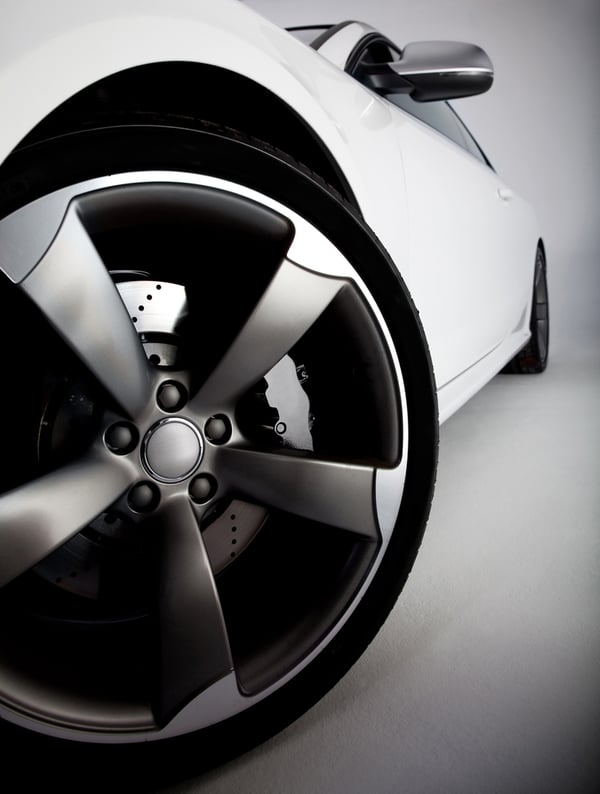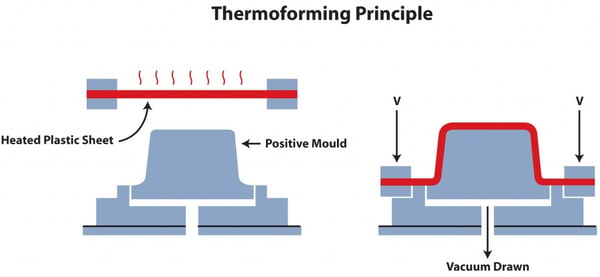The rise of the electric car in recent years has been cause for celebration for many different groups. Those concerned with sustainability and the environmental impact of fossil fuel use obviously love the growing popularity of electric vehicles (EV). Innovators and changemakers in the automotive world are also happy to see the industry evolve.
One not-so-obvious group that is equally thrilled with the increasing demand for electric cars? Plastic components manufacturers. The increasing production of electric automobiles has also led to rising demand for plastic automotive applications.
Creating multiple costly molds in a short period of time is simply infeasible for most electric vehicle manufacturers.
According to a report from the market research firm Frost & Sullivan, the market for EV plastic components has grown from only $500,000 in 2010 to a projected $73 million in 2017. That market includes a wide range of parts, such as power train components, energy recovery parts, cooling pipes, pumps, fans, casings, and much more.
Why all the demand for plastic applications? The answer is simple. The lighter a car is, the less energy needed to power the vehicle. Lighter cars lead to longer-lasting battery life and more mileage before a recharge is needed. In the automotive industry, convenience is a key selling point. If a car can last longer between charges, that point could give the manufacturer a competitive advantage.
In the race to be lighter, many EV manufacturers are exploring ways to transition parts that have traditionally been made from metal into alternative plastic components. Plastic applications manufacturers who can meet the demand stand to benefit greatly from this rapidly-expanding market.
The Injection Molding Dilemma
Of course, there is one big challenge that exists for EV manufacturers and for plastic part producers who want to enter the EV market. Traditionally, plastic parts have been produced using a process called injection molding, which involves creating a long-term mold to form plastic into the required shape.
Injection molding offers one big benefit. After you produce the mold, the process has a very low per-unit cost. You simply run the plastic through the mold over and over again to produce as many parts as you need.
At first glance, it may seem like that low production cost would be appealing for the EV market. However, there are also some challenges with injection molding. The mold can be very expensive to create, perhaps costing tens or even hundreds of thousands of dollars.
(Courtesy: Ray Products Company Inc.)
Because of that high upfront outlay, injection molding only becomes cost effective if you are running a high quantity of parts. Depending on the part, you may need to make thousands to make the initial investment worthwhile.
That’s a problem in the EV industry. These cars are always evolving. Producers of electric vehicles are in the business of innovation. Next year’s model could be completely different than this years. In a highly evolving industry, it’s tough to commit to a particular part beyond more than a few months.
For all of its cost-efficiency potential, injection molding isn’t flexible. If the car design changes and a different size or shape is needed for a particular part, you have to start over with a new mold. Creating multiple costly molds in a short period of time is simply infeasible for most EV manufacturers or for plastic part companies in the EV market.
The Thermoform Alternative
If you’re in the EV market and you’re struggling with the limitations of injection molding, you may want to consider thermoform production as an alternative. Historically, thermoform has been used to produce plastic packaging. However, it is gaining traction as a production method for plastic automotive components.
With thermoform, the mold itself may only cost a few thousand dollars making you avoid the steep upfront cash outlay. That means you can make thermoform cost efficient with a small batch of only a few hundred parts and plenty product development testing.
If the design changes and a different type of part is needed, it’s not difficult to create a new thermoform mold or even make slight adjustments to the existing mold. Thermoform is highly accommodating for innovation. There aren’t steep cost limitations holding back design changes.
Before you jump into thermoform production, make sure you’re working with a partner who has experience in the EV industry. Just because a company can produce thermoformed plastic packaging doesn’t mean they’re right for electric cars.
You want a partner who understands the industry’s strict safety and quality regulations. You also want someone who will be able to keep the mold available to produce replacement parts well into the future. A transparent production process is also key so you can monitor efficiency and delivery times. And perhaps most importantly, you want a partner who has a track record of successfully delivering high quality EV plastic components.
If you’re an EV manufacturer or a plastic applications manufacturer who wants to get in the EV industry, consider thermoform as an alternative production method. You may find that it provides you with a key competitive advantage in terms of capital investment, flexibility, and innovation. ![]()








Let Us Know What You Thought about this Post.
Put your Comment Below.